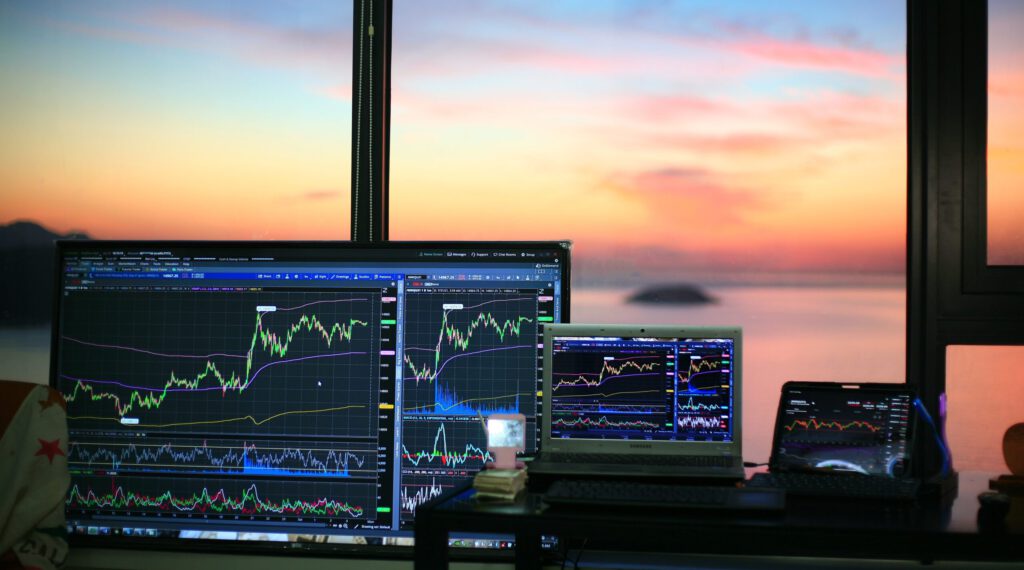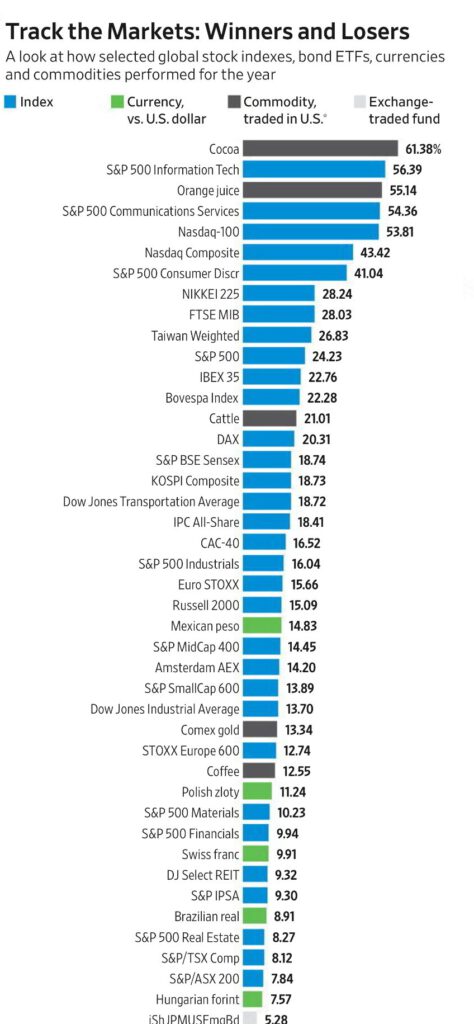
Investors made handsome profits again in 2023. However, only very few had bet on the best investments.
New year, new luck. This is how investors could describe their approach to investing money.
In any case, 2023 was a somewhat more positive year again, after practically no positive returns were achieved anywhere in 2022.
Big ray of hope
Hardly anyone, however, would have thought in advance which asset classes would actually perform well in the past stock market year.
In this respect, it is always worth taking a look back, as the major bank UBS did this week when it announced the annual returns for Swiss pension funds.
According to this, the return – after deduction of fees – amounted to 4.92 percent. After -9.58 percent in 2022, this is once again a ray of hope.
Since the publication of the UBS Barometer in 2006, the annualized return has thus been 2.96 percent. On average, the second pillar thus yielded around 3 percent per year.
Private equity in the red
The year 2023 was particularly exciting if you look deeper into the individual asset classes.
In the case of pension funds, Swiss bonds returned a surprisingly good 7.41 percent. In contrast, pension funds with bonds denominated in foreign currencies only made a loss of 0.31 percent – mainly due to the strong Swiss franc.
Swiss equities still yielded institutional investors a return of 6.65 percent after fees. Foreign equities worldwide excluding Switzerland generated a return of 10.82 percent. This shows that the preference for Swiss stocks clearly results in a loss of returns.
Real estate only saw a slight increase of 0.32 percent.
And the performance of hedge funds (-1.48 percent) and private equity (-3.74 percent) was negative.
Cocoa and AI
In the long term, investors in Swiss equities would have achieved a return of 5.41 percent. Global equity investments paid off slightly less at 4.37 percent. In the case of real estate, returns since 2006 have been 5.12 percent.
If Swiss investors ignore the currency risk of the strong Swiss franc, it is worth taking a look at Wall Street.

Hardly anyone would have thought in advance that the investment in cocoa would have achieved a dollar return of 61.4 percent and thus lead its top ranking, as the “WSJ” reported on the annual review.
At the same time, the S&P 500 Information Tech rose by 56.4 percent, as the tech stocks for artificial intelligence (AI) had a particularly positive impact, as they drove up the entire capital markets last year.
Mexico’s peso and Poland’s zloty
In addition to cocoa, investing in orange juice would also have been particularly worthwhile. The return amounted to 55.14 percent. The Japanese Nikkei index rose by almost 30 percent. And the Spanish Ibex index rose by around 23 percent and the German DAX index by 20.3 percent.
Only the currencies of Mexico (+15 percent) and Poland (+11.2 percent) outperformed the Swiss franc (+9.91 percent).
Lagging at the rear in terms of currencies and in the overall rankings were the Turkish lira with -37 percent and the Argentine peso with -78 percent.
Soybeans, wheat and corn fell by 15, 21 and 31 percent in dollar terms in 2023. Who would have thought this in view of all the geopolitical tensions? Probably no one.
New year, new luck. The search for the 2024 favorites begins.
14.01.2024/kut./ena.





